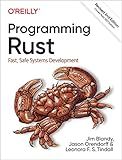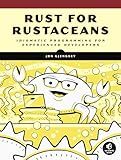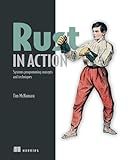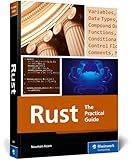Best Rust Programming Books to Buy in December 2025

The Rust Programming Language, 2nd Edition



Programming Rust: Fast, Safe Systems Development



Rust for Rustaceans: Idiomatic Programming for Experienced Developers



Rust in Action



Rust Programming: A Practical Guide to Fast, Efficient, and Safe Code with Ownership, Concurrency, and Web Programming (Rheinwerk Computing)



Rust Atomics and Locks: Low-Level Concurrency in Practice



Learn Rust in a Month of Lunches


Working with vectors of strings in Rust is very similar to working with vectors of any other type. You can create a new vector of strings using the vec! macro or by using the Vec::new() constructor. Strings in Rust are represented as String objects, which are heap-allocated and mutable.
To add a string to a vector, you can use the push method on the vector, like so: vec.push("some string".to_string()).
To access elements in the vector, you can use indexing, just like with arrays: let my_string = my_vector[0].
You can also iterate over the elements in a vector using a for loop or the iter method:
let my_vector = vec!["hello".to_string(), "world".to_string()];
for my_string in &my_vector { println!("{}", my_string); }
Overall, working with vectors of strings in Rust is straightforward and intuitive, with many of the same methods and operations as working with vectors of other types.
How to sort a vector of strings alphabetically in Rust?
You can sort a vector of strings alphabetically in Rust by using the sort() method provided by Rust's standard library Vec type. Here is an example code snippet to demonstrate how you can achieve this:
fn main() { let mut vec_strings = vec![ String::from("banana"), String::from("apple"), String::from("pear"), String::from("grape"), ];
vec\_strings.sort();
for s in &vec\_strings {
println!("{}", s);
}
}
In this code snippet, we define a vector vec_strings containing some strings. We then call the sort() method on the vector to sort its elements alphabetically. Finally, we iterate over the sorted vector and print its elements to the console.
When you run this code, the output will be:
apple banana grape pear
You can also define a custom sort order (e.g., sorting in reverse order or by string length) by providing a closure to the sort_by_key() method.
How to remove specific elements from a vector of strings in Rust?
To remove specific elements from a vector of strings in Rust, you can use the retain method along with a closure that defines the condition for removing elements. Here's an example code snippet:
fn main() { let mut vector = vec!["apple", "banana", "cherry"];
// Define the condition for removing elements
let elements\_to\_remove = vec!\["banana", "cherry"\];
// Remove elements that match the condition
vector.retain(|&x| !elements\_to\_remove.contains(&x));
// Print the updated vector
println!("{:?}", vector); // Output: \["apple"\]
}
In this example, we use the retain method to iterate over the vector of strings and retain only the elements that do not match any of the elements in the elements_to_remove vector. The closure |&x| !elements_to_remove.contains(&x) checks if the element x should be retained based on whether it exists in the elements_to_remove vector.
After calling retain, the vector will be updated to contain only the elements that did not match the condition for removal.
What is the default capacity of a vector in Rust?
The default capacity of a vector in Rust is typically allocated to hold 4 elements. However, this can vary based on the implementation of the Vec type and the specific version of the Rust compiler being used.
How to create a new vector of strings in Rust?
To create a new vector of strings in Rust, you can use the vec![] macro to initialize an empty vector and then use the push() method to add strings to it. Here's an example:
fn main() { let mut string_vector: Vec = Vec::new();
string\_vector.push(String::from("Hello"));
string\_vector.push(String::from("world"));
println!("{:?}", string\_vector);
}
In this example, we first create an empty vector called string_vector of type Vec<String>. We then use the push() method to add two strings "Hello" and "world" to the vector. Finally, we print out the contents of the vector using println!().
